- Ridiculous performance
- Everyday comfort and liveability
- Excellent value for money
- Thirsty
- Short service intervals
- No manual mode
The 2020 Kia Stinger is probably one of the most controversial cars ever made by the ambitious Korean manufacturer. No, it doesn’t have oddball styling or a space age drivetrain. If anything, it’s almost old school with its muscular proportions and front-engine/rear-drive layout. But there’s something about the Stinger that gets people talking about cars with passion – whether the positive kind or the negative kind.
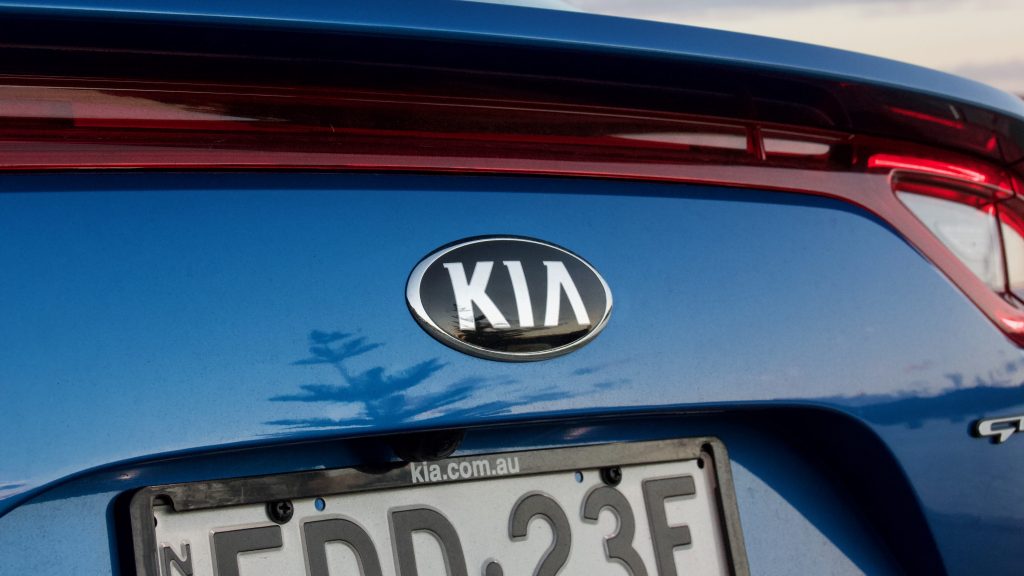
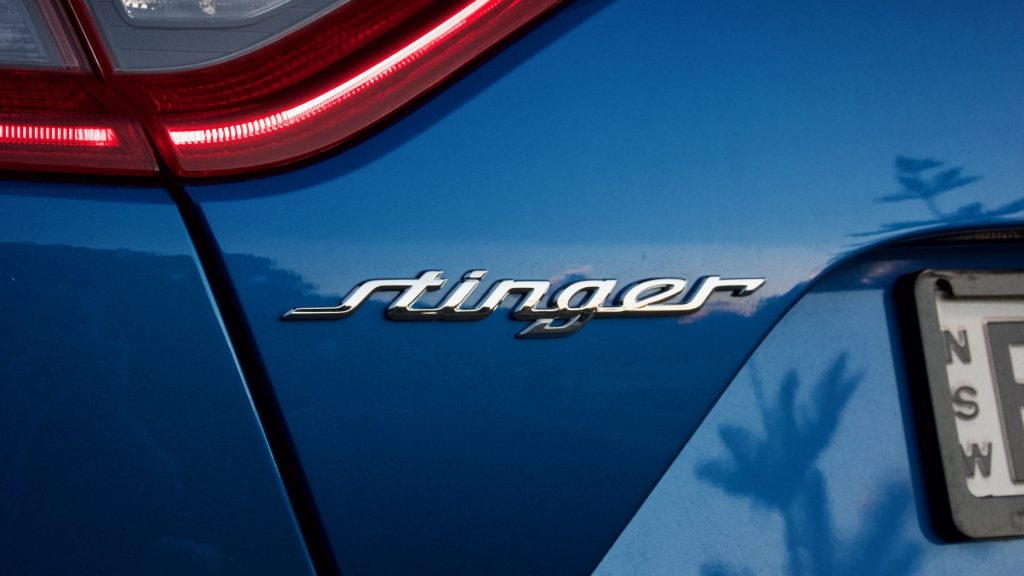
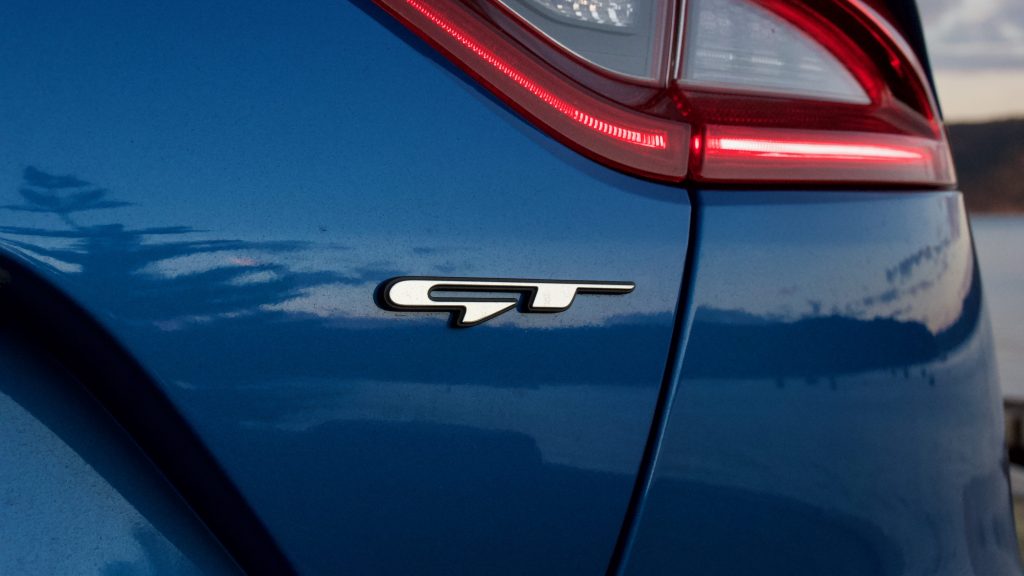
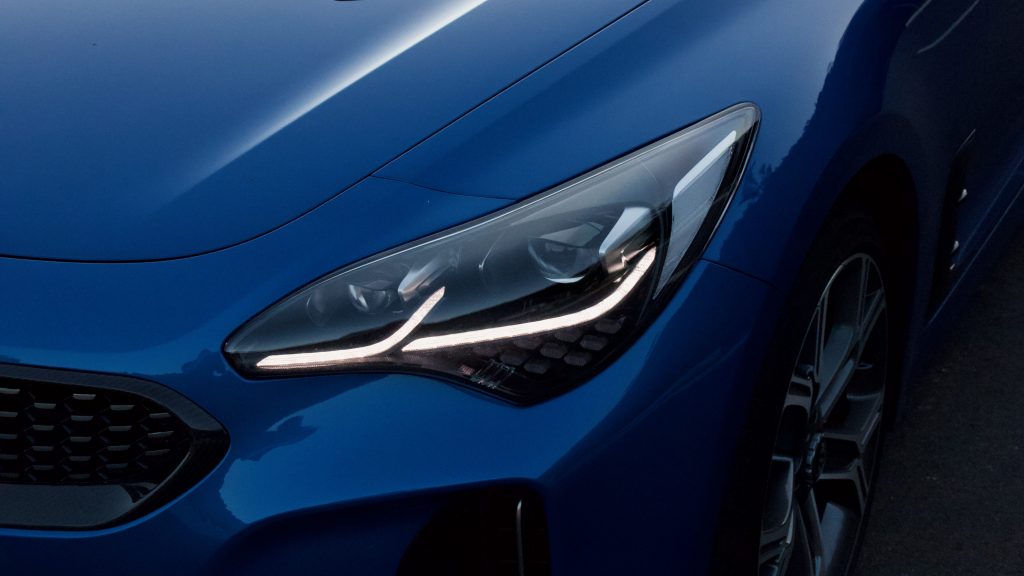
Some still clutch to phrases like “but it’s a Kia” and others dismiss it because it’s not German or Aussie or it doesn’t have the ‘pedigree’ to be a proper sports car. I say those who dismiss it are simply in denial about how quickly Kia and Hyundai have become serious contenders with performance cars like the Stinger and Hyundai’s i30 N, instead still relating them to the humble Excel or first-generation Cerato.
So, like any good sports car, the 2020 Kia Stinger needs to offer a myriad of special editions to join the club. How’s that for pedigree? Enter the Carbon Edition. Is it a special edition for the sake of special editions or does it add to what is already an excellent package? Let’s find out.
Price & Specs: 9.0/10
In 2019, the Stinger range was rationalised – killing the mid-spec Si models in favour of just the 200S and GT-Line as the sole four-cylinder options and the 330S and GT as the full-fat V6s. Like most special editions, the Carbon Edition builds on the GT – adding an additional $4,000 to the price tag for a total of $64,990 plus on roads.
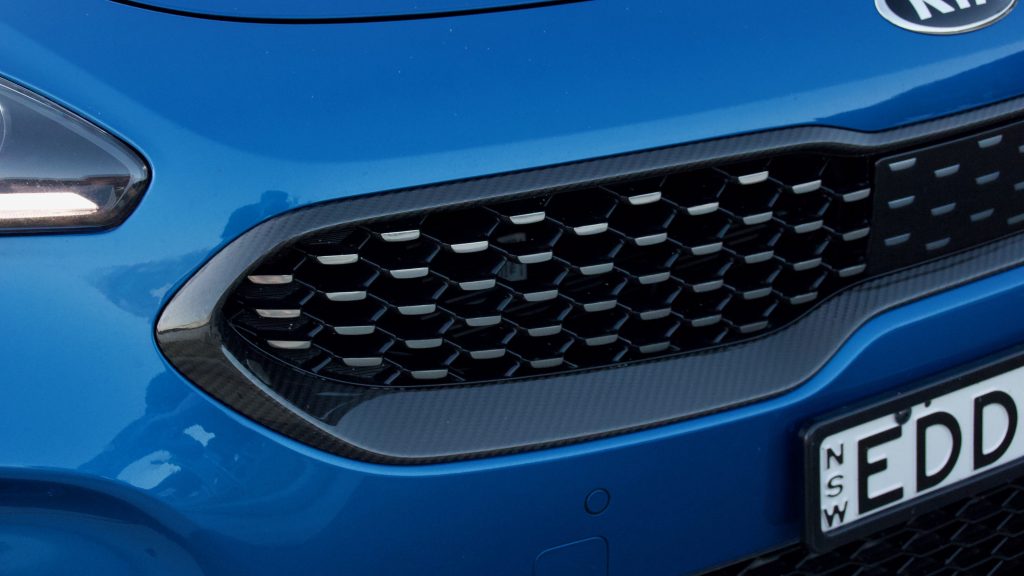
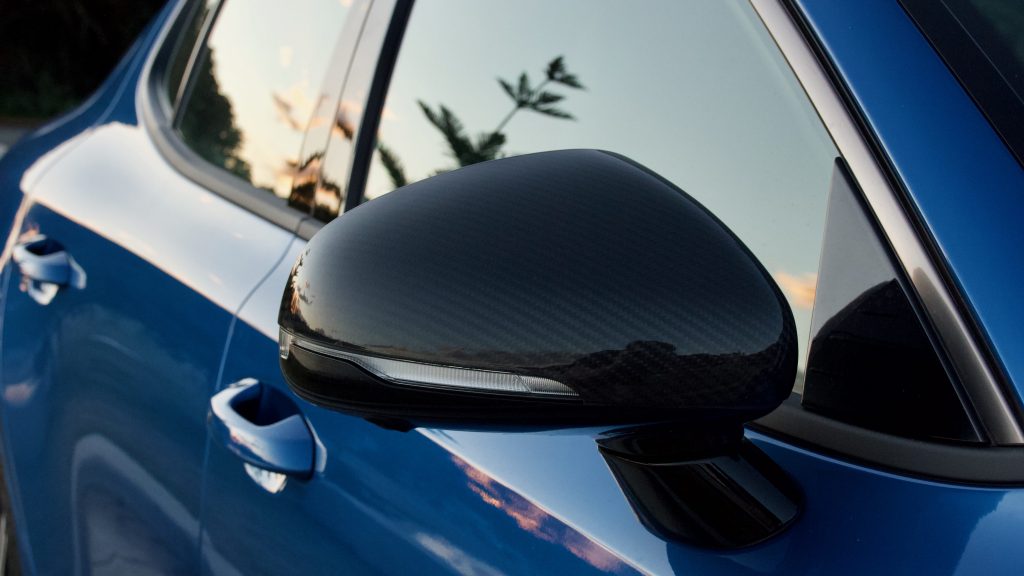
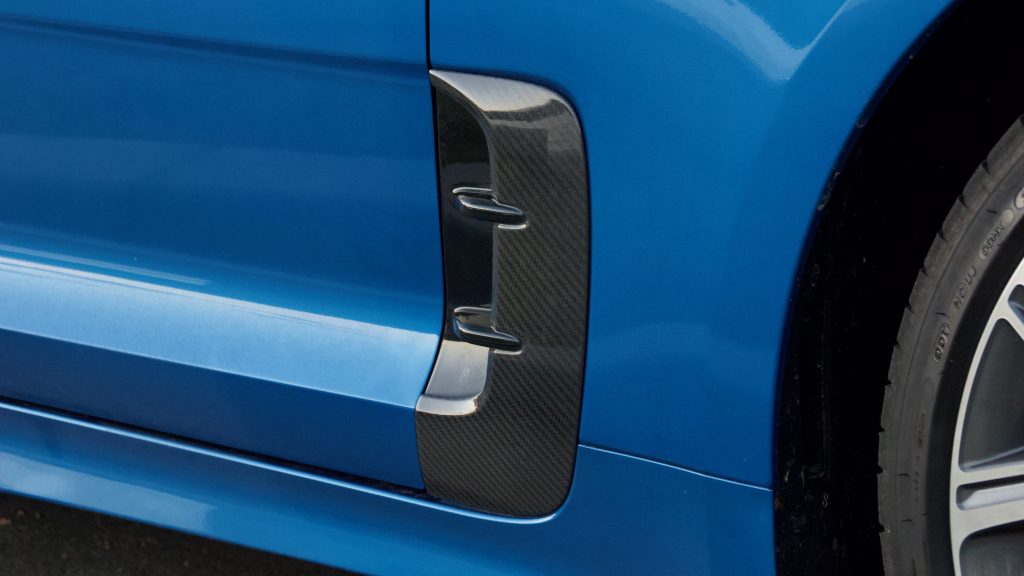
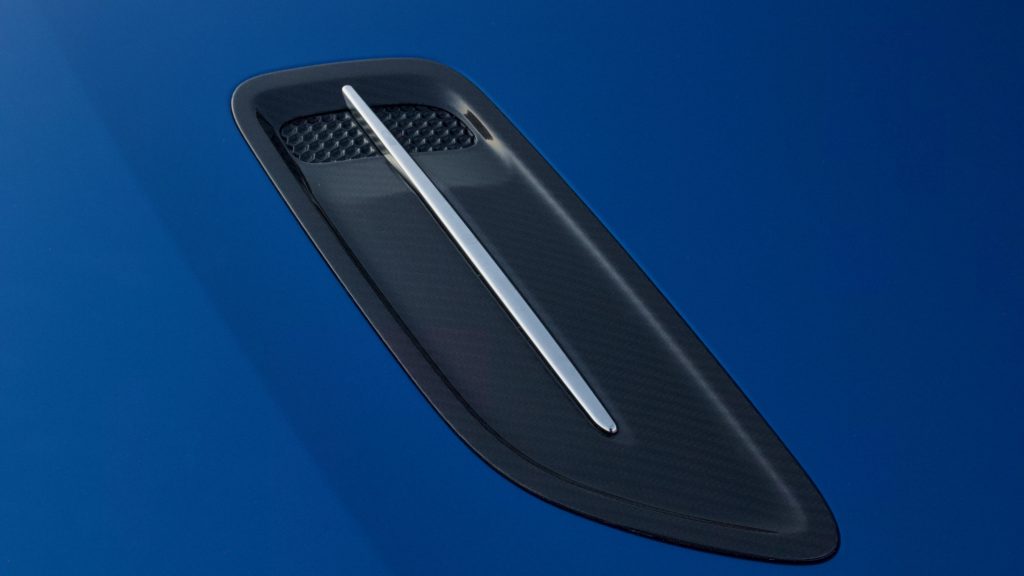
As you’d expect, the limited-run model is adorned with real carbon fibre trimmings on the grille surround, (fake) bonnet vents, side vents, wing mirror caps and rear diffuser. Inside, the changes are limited to a heated Alcantara steering wheel.
As per the regular GT, the Carbon Edition also gets autonomous emergency braking (AEB) with pedestrian detection, adaptive cruise control, forward collision warning, lane keep assist, driver attention alert, blind-spot monitoring with rear cross-traffic alert, front and rear parking sensors, a 360º parking camera, LED headlights and tail lights, adaptive dampers, 19-inch alloy wheels wrapped in Michelin Pilot Sport 4S tyres, a mechanical limited-slip differential and Brembo brakes.
Inside, you get an 8.0-inch infotainment touchscreen with built-in navigation, Apple CarPlay and Android Auto, digital radio, Nappa leather upholstery, heated and ventilated front seats, a colour heads-up display, suede headliner, power sunroof, Qi wireless phone charger, and a 15-speaker Harman/Kardon sound system.
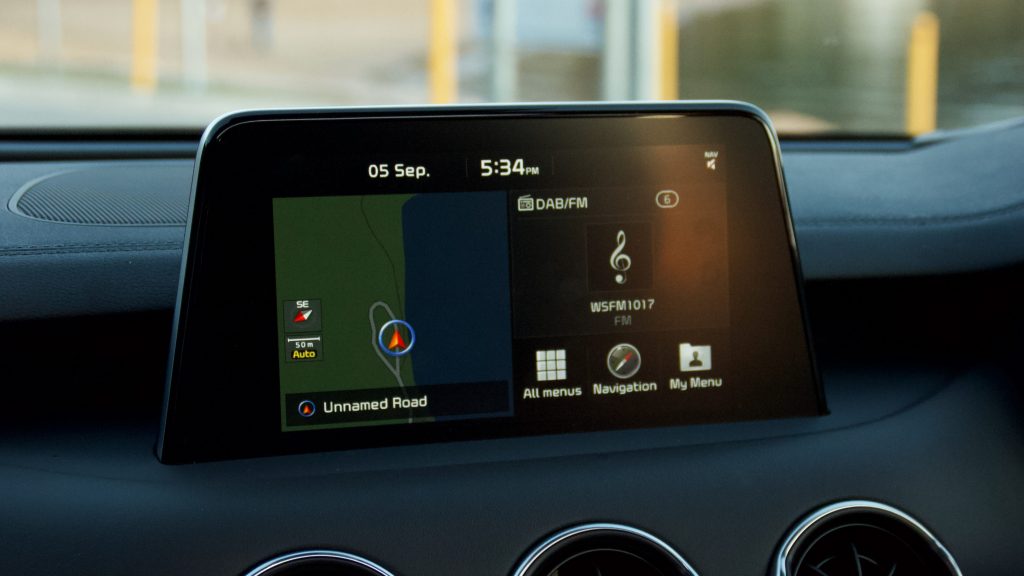
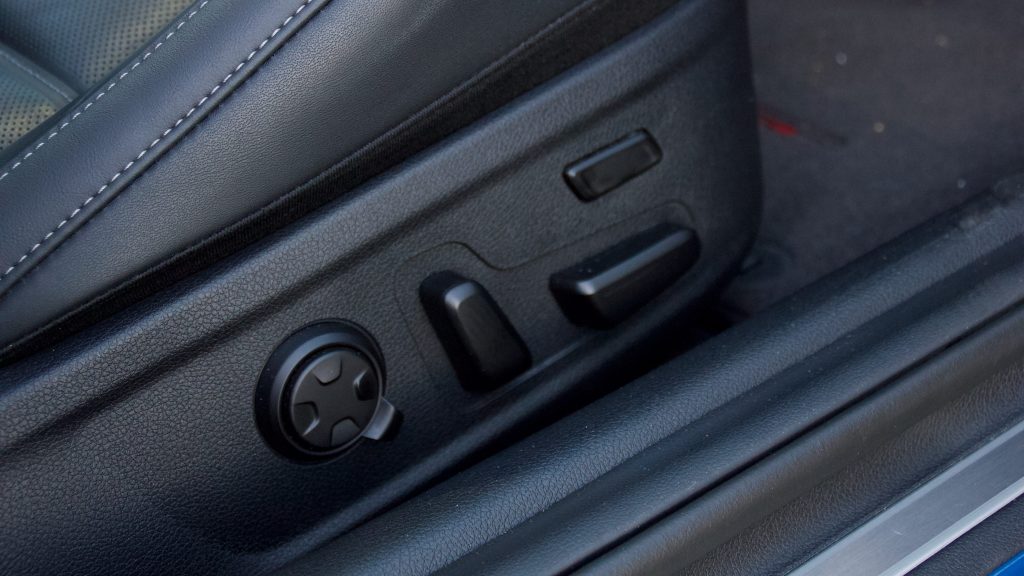
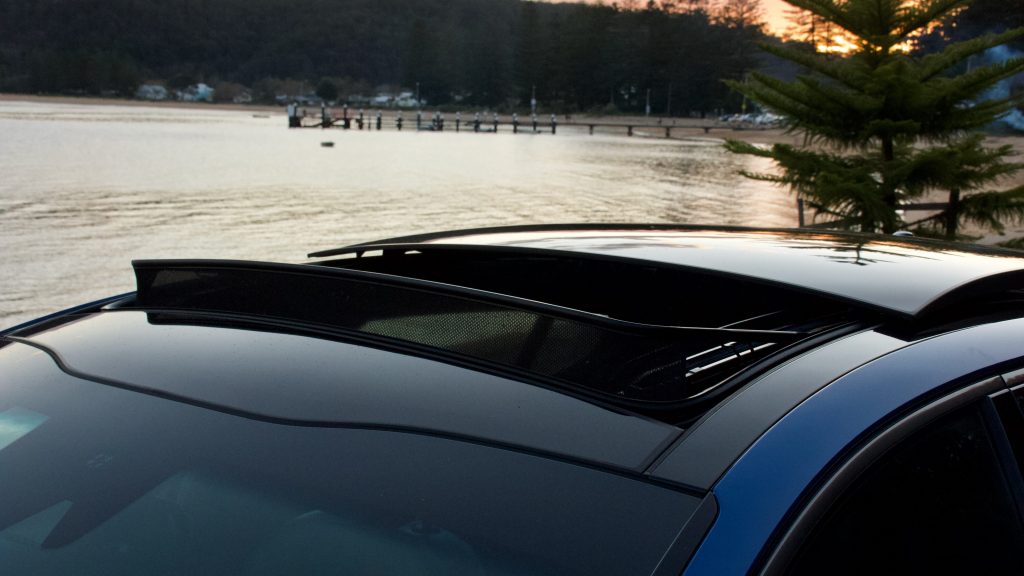
The only option available is the Aurora Black and Snow White Pearl paintwork for $695. We’d personally rather go with one of the brighter hues like Neon Orange, Hichroma Red or our test car’s Micro Blue – which happen to be free of charge. Curiously, the Carbon Edition also misses out on the Australian-developed bi-modal exhaust – a $2,660 plus installation option – while the more demure-looking Nighty Sky Edition gets it as standard.
While there are few cars that offer the same performance and kit at a similar price to the Stinger, buyers looking for a badge can have a BMW 320i for $68,900 plus on roads, but will ultimately sacrifice standard equipment and the four-cylinder engine won’t be able to match Stinger’s mighty V6 powertrain for sheer grunt.
Performance & Economy: 9.0/10
Any car-loving tragic will be familiar with the 2020 Kia Stinger’s 3.3-litre twin turbo V6. Sure, there is a more sensible 2.0-litre turbo petrol available further down the ladder, but is that really an option when you can have a stonking V6 pushing out 272kW and 510Nm? The brauny engine is paired with a slick-shifting eight-speed torque converter automatic transmission that sends the power exclusively to the rear wheels. Unfortunately AWD isn’t available in Australia but it’s hardly a dealbreaker.
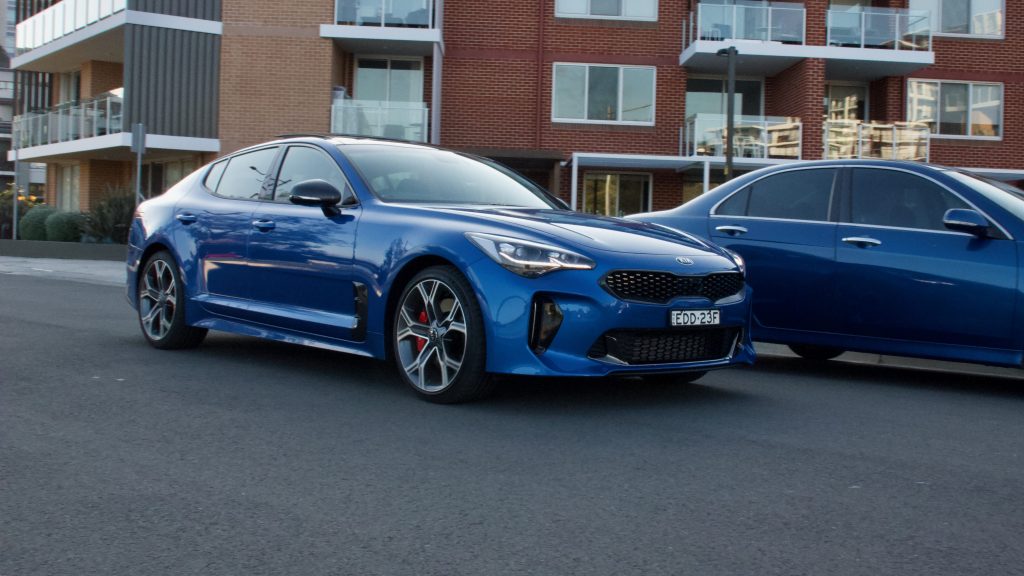
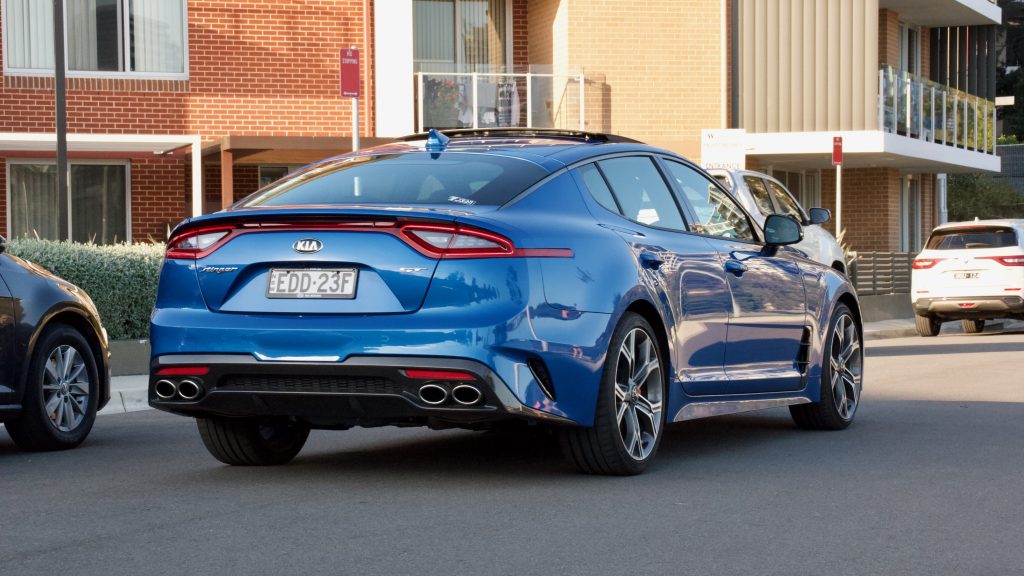
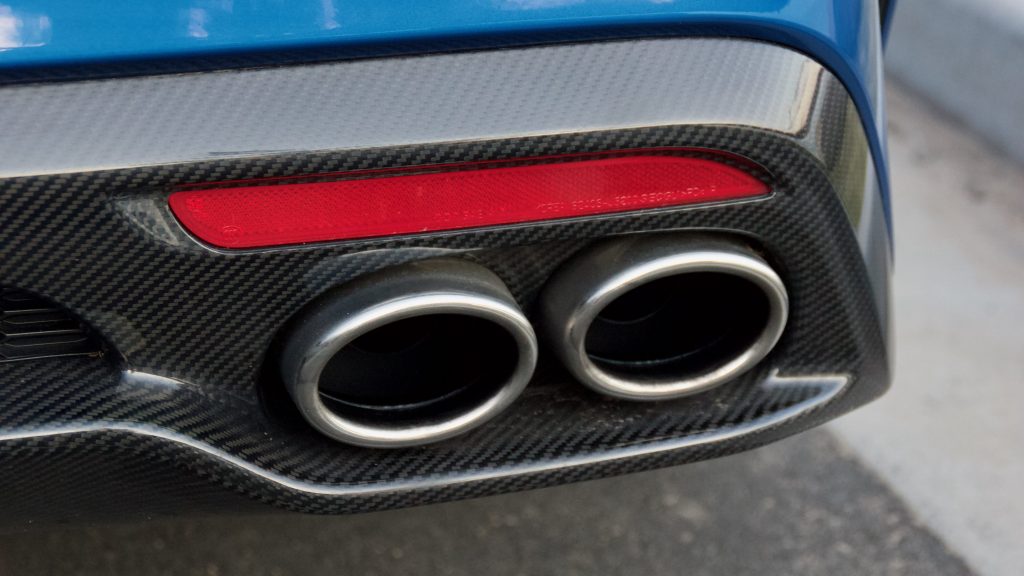
Even with sticky 255/35R19 Michelin Pilot Sport 4S rubber at the back (225/40R19 up front), a heavy right foot can easily overcome the grip, turning power into smoke. 0-100km/h is dealt with in 4.9 seconds which is properly quick when you consider how big the Stinger actually is. Even more impressive is the rolling acceleration – easily climbing from 80km/h to 110+ if you need to quickly overtake or merge onto the motorway. A word of warning: the brutal acceleration regardless of what speed you’re going is utterly addictive.
“A word of warning: the brutal acceleration regardless of what speed you’re going is utterly addictive.”
The automatic transmission plays a key part in keeping the engine spinning at the sweet spot. It intuitively knows when you need to grab a lower gear or two or when to hold onto a gear and let the 510Nm of torque do the talking. Sport mode makes it even more keen to downshift and hold onto gears for longer, so comfort mode makes much more sense if you’re doing to school run or stuck in city traffic – offering a more relaxed driving experience. One gripe we did have when pushing on is that there is no true manual mode. Sure, you can tap the wheel-mounted paddles and the car reacts instantly, but 20 seconds later it’ll switch back to auto mode and change back to whatever gear it thinks suits best. It can get a little frustrating, so we found it best to let the auto do its thing. Allowing the shifter to switch the car into a fully manual mode would over come this.
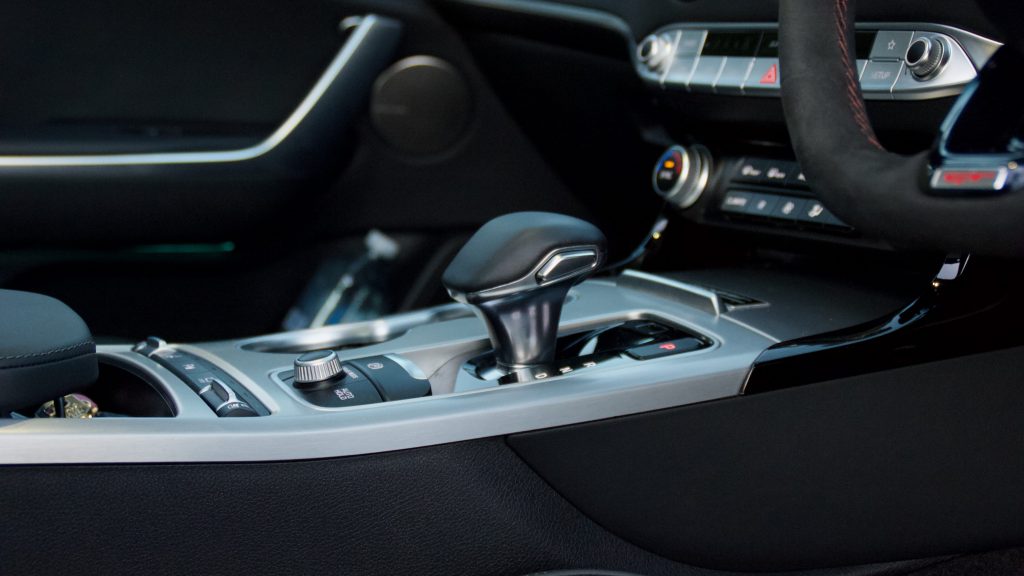
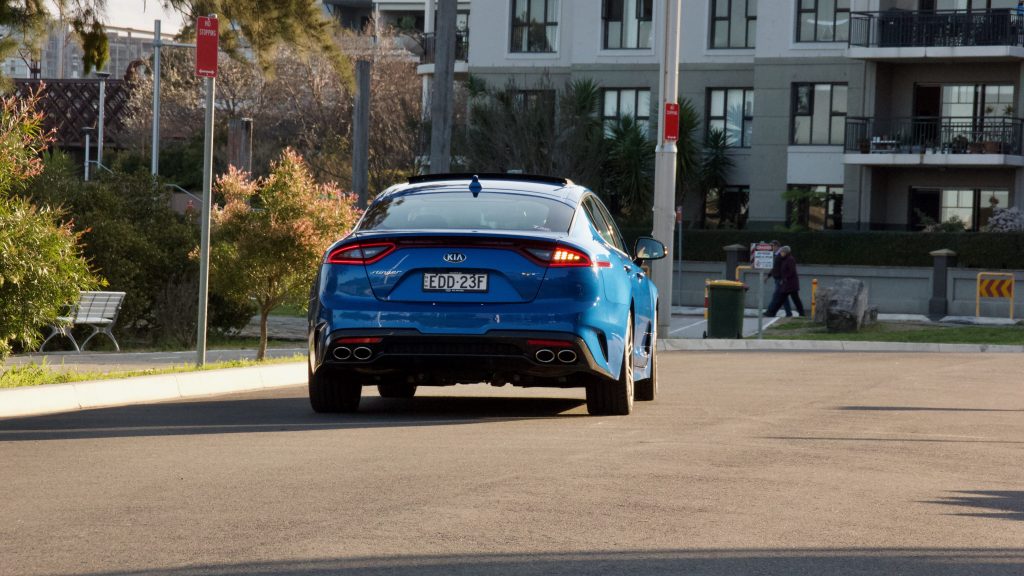
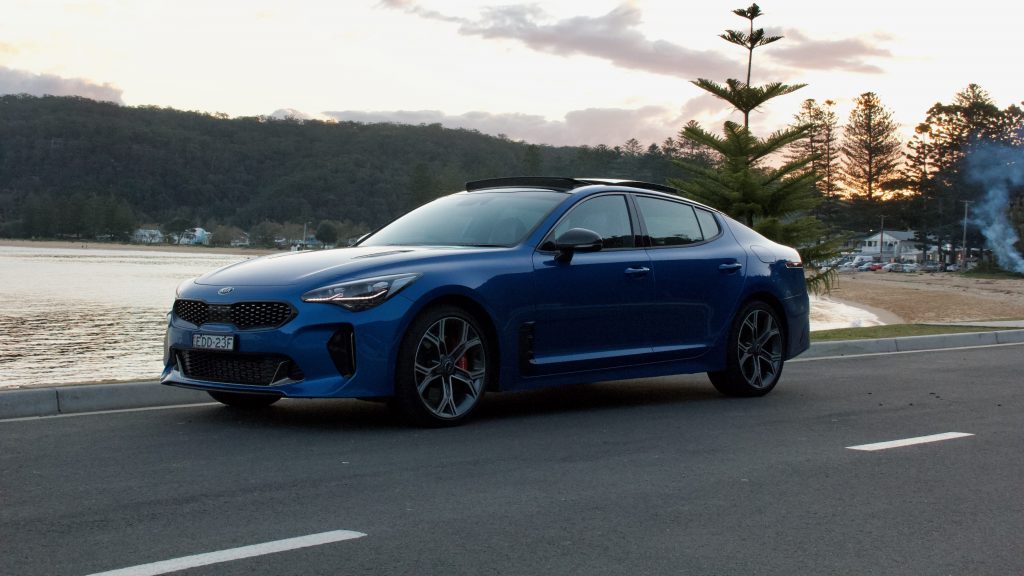
Downsides? As mentioned earlier, we don’t understand why the 2020 Kia Stinger’s most expensive and sports-oriented variant doesn’t score the active exhaust to match the racy bits of carbon fibre on the exterior. It seems like an odd omission giving you the boy-racer bling not what enthusiasts actually want. The creamy V6 sounds fine, but is disappointingly hushed when pressing on.
“The creamy V6 sounds fine, but is disappointingly hushed when pressing on.”
Another downside, as much as we’d love to brush over it, is the economy. It’s hard to ignore the combined average of 13.5L/100km in the week we had the Stinger. In the its defence, we weren’t exactly driving in a manner that would hit its 10.2L/100km claimed figure. Who would? Still, it would be nice to see some measures taken to help reduce fuel consumption and make the Stinger V6 easier to justify for daily duties – such as engine stop/start or cylinder deactivation.
While the BMW 320i simply can’t match the Stinger’s sweet drivetrain, it does comfortably beat the its economy – claiming to return a combined figure of 6.3L/100km.
Ride & Handling: 9.0/10
Some cars with adaptive suspension feel more like a gimmick than a genuinely useful feature, with the slightest degrees of variation from soft to firm. Kia, on the other hand, has found an excellent balance with the Stinger’s adaptive suspension. The drive modes are clear and easy to understand – with the five simple options of Eco, Comfort, Sport, Smart and Custom. They do exactly as they say on the box, with Custom and Smart offering you the ability to the change the way the Stinger feels depending on the way you want to drive. Smart constantly adapts to your driving style, showing a diagram on the driver’s display of whether it thinks you want to cruise or take it on a backroad blast. Custom allows you to pick exactly what you want, how you want. Our personal favourite was setting up Custom with a sporty engine and transmission configuration but the suspension on its softest setting.
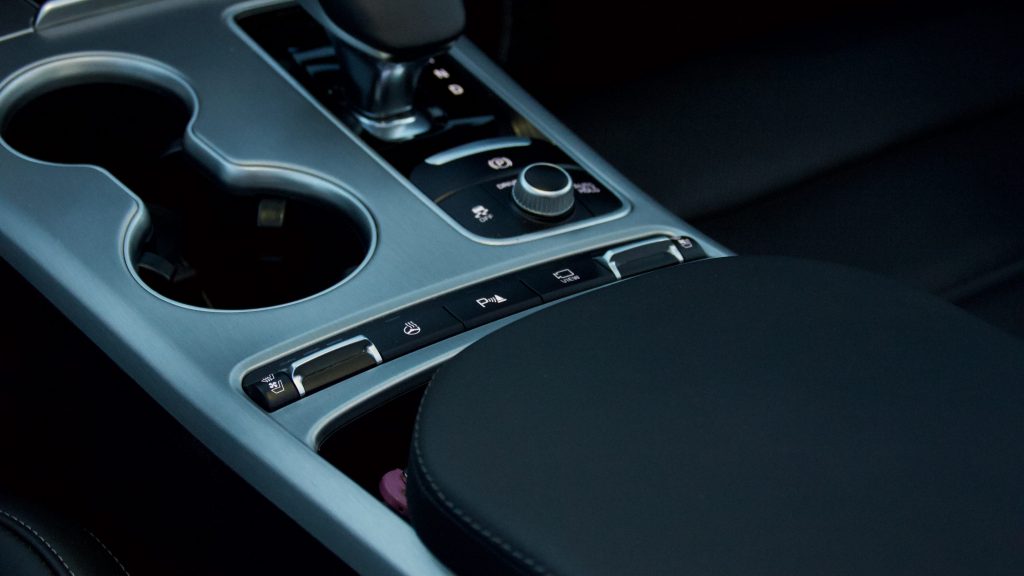
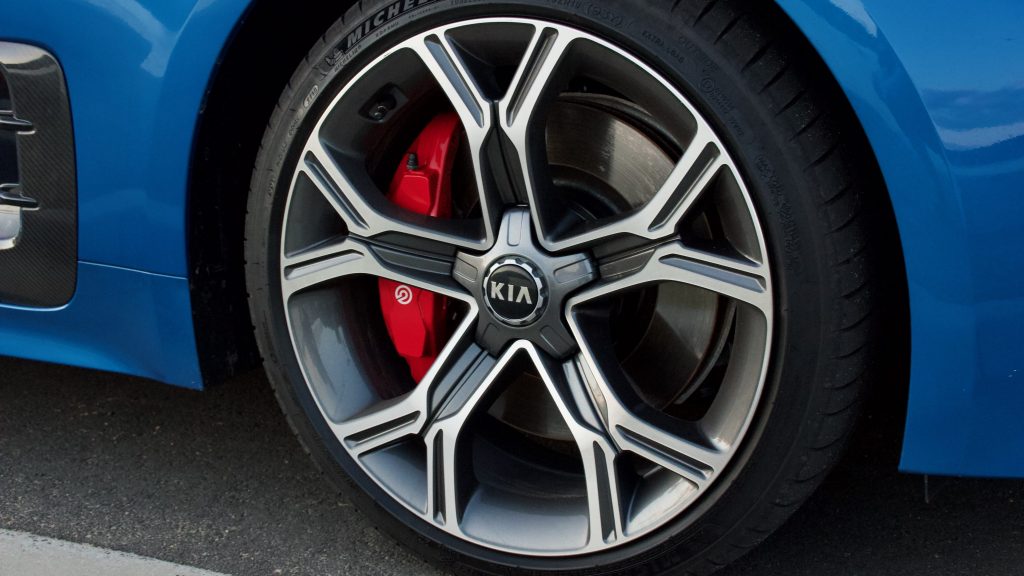

As with most Kia’s, the ride does lean more towards the firm side of things. Smaller imperfection are felt through those big 19” wheels at slower speeds, but it is well judged and remains poised even with bigger hits. It really shows off how well Kia’s team of Australian engineers understands our unique road conditions.
“It really shows off how well Kia’s team of Australian engineers understands our unique road conditions.”
Switch it to Sport mode to tackle some backroads and you’ll admire how keen the Stinger is to turn in despite its heft. It doesn’t feel like you’re throwing an 1,800kg liftback into a corner at all – instead shrinking around you as you familiarise yourself with the big GT. The strong Brembo brakes also do an incredible job of wiping off speed quickly.
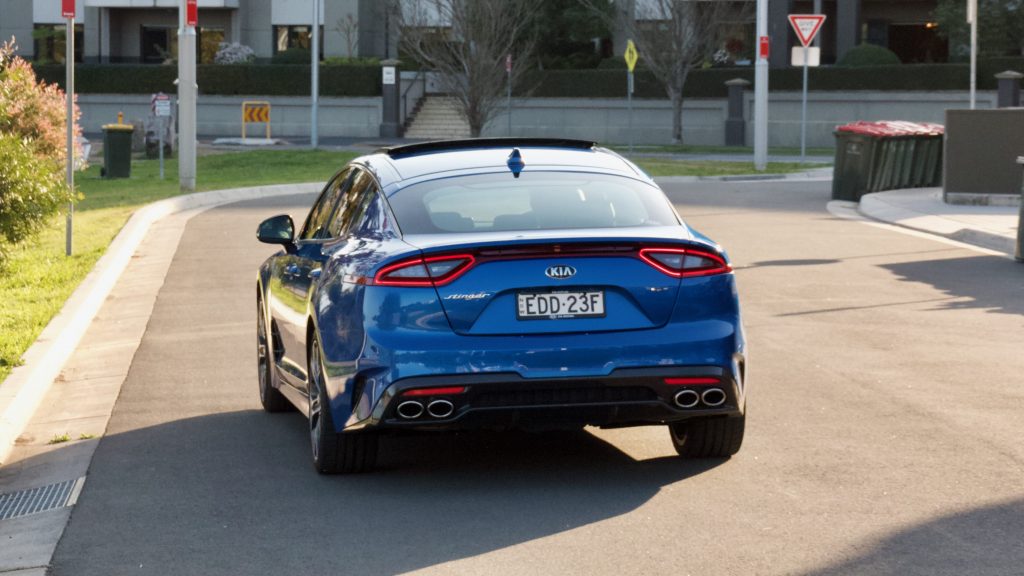

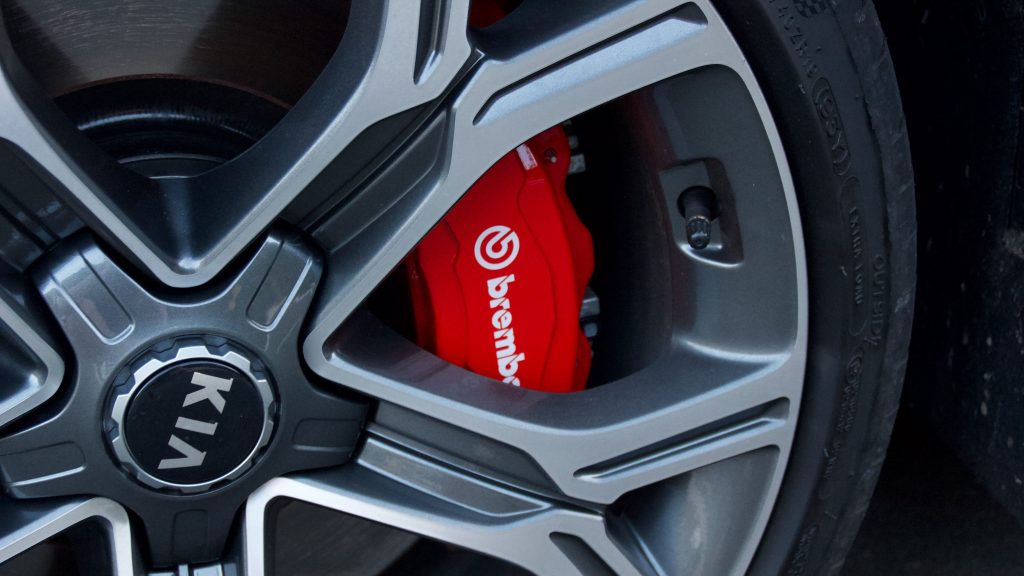
A BMW 3 Series is always a safe bet in terms of offering a satisfying driving experience but, while 320i does offer plenty of pedigree (yep, back to that word again) and panache, it doesn’t have the power to exploit the chassis and it misses out on adaptive dampers.
Interior & Practicality: 8.5/10
I would say something along the lines of ‘the Stinger’s interior will have you questioning whether you’re in a Kia or a pricier German rival’ but that would be doing a disservice Kia’s recent effort’s in terms of interior design and finish.
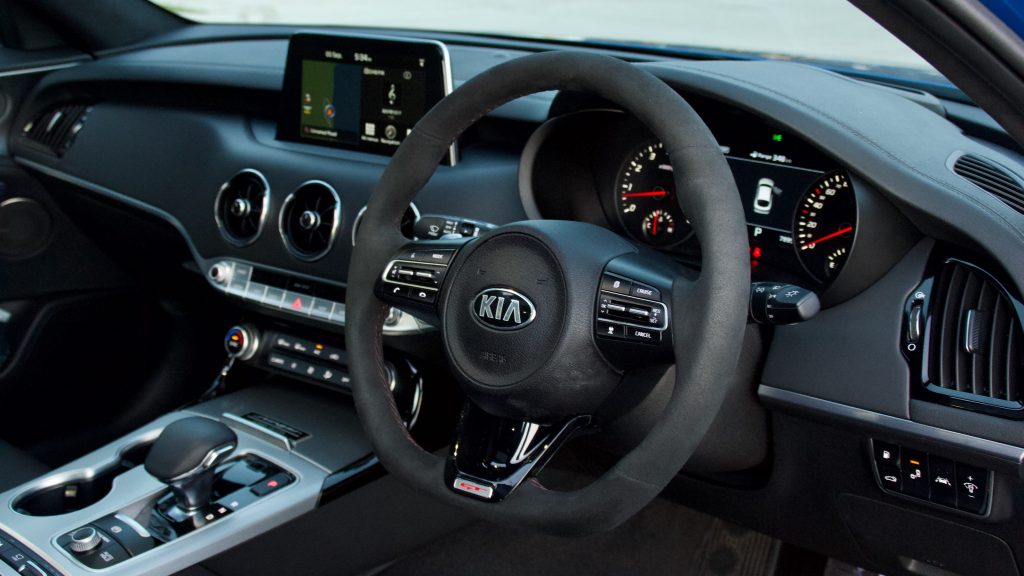
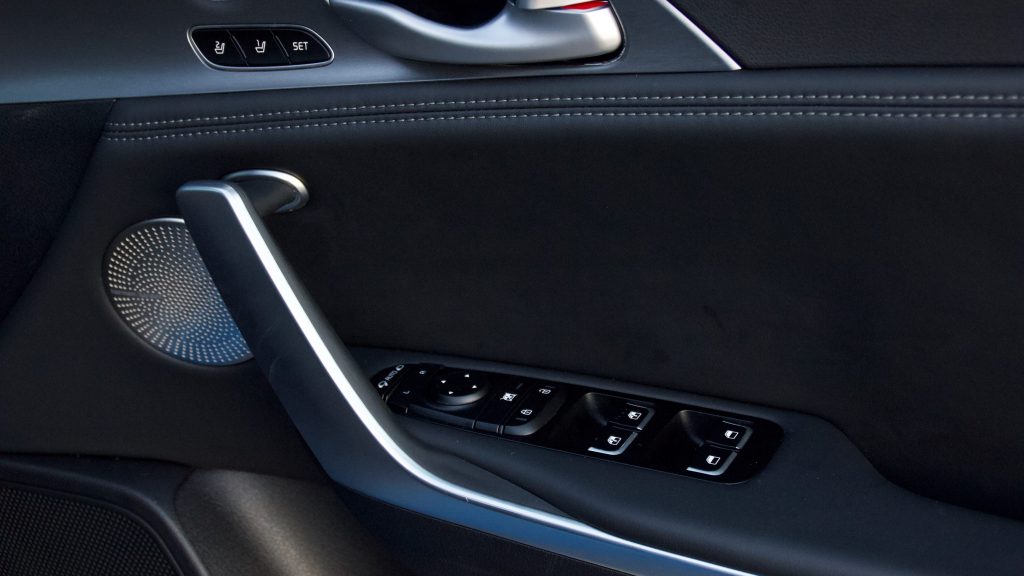
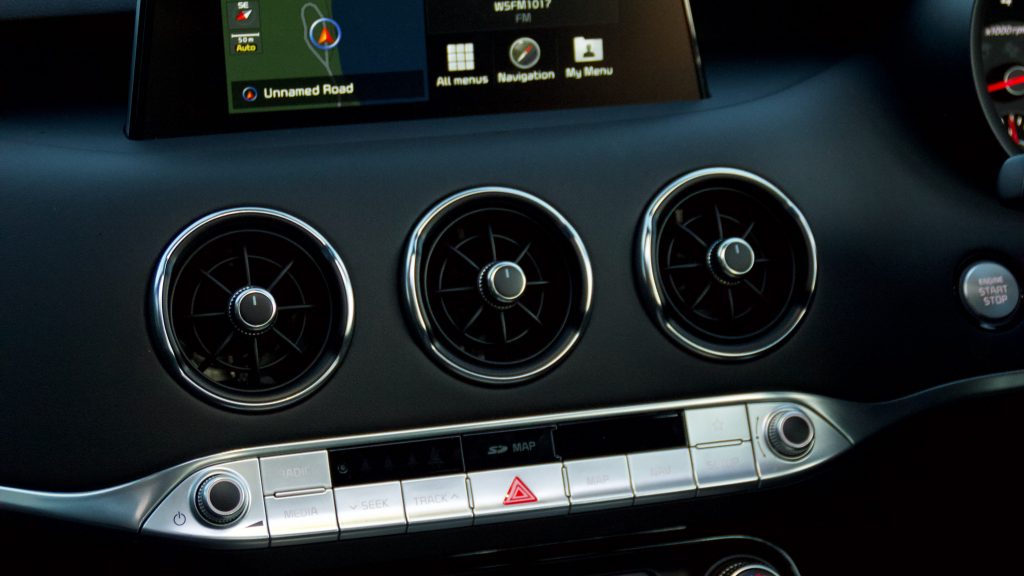
For starters, there’s a bespoke vibe to the 2020 Kia Stinger’s interior from the key fob – which is similar but not identical to any other Kia on the Australian market – to the low-slung driving position that the Stinger’s unique rear-wheel drive architecture gifts it. It all makes for a very special experience from the moment you lower yourself into the Nappa leather pews and the electrically-adjustable steering column tucks you in.
“For starters, there’s a bespoke vibe to the 2020 Kia Stinger’s interior…”
The dash is contemporary if clearly inspired by German rivals – which is no bad thing. High quality touches such as the turbine-like air vents, classy electronic gear selector and lovely toggle switches for the heated and cooled front seats all set the tone of an indulgent European sports sedan. Even better is that everything feels solidly screwed together and the materials – including the supple leather and delightful Alcantara headlining – show that Kia threw everything including the kitchen sink at its flagship model. Exclusive to the Carbon Edition is the aforementioned Alcantara-wrapped steering wheel, which proved decisive amongst the DiscoverAuto team. Personally, I feel like it’s better suited to a boisterous hot hatch than a suave grand tourer, but that’s just me.
“High quality touches such as the turbine-like air vents, classy electronic gear selector and lovely toggle switches for the heated and cooled front seats all set the tone of an indulgent European sports sedan.”
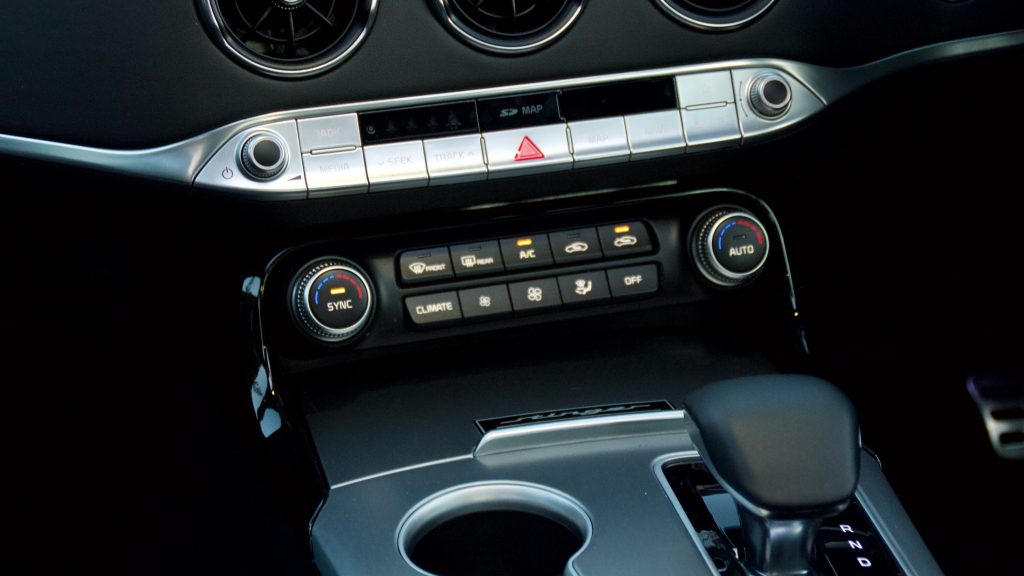
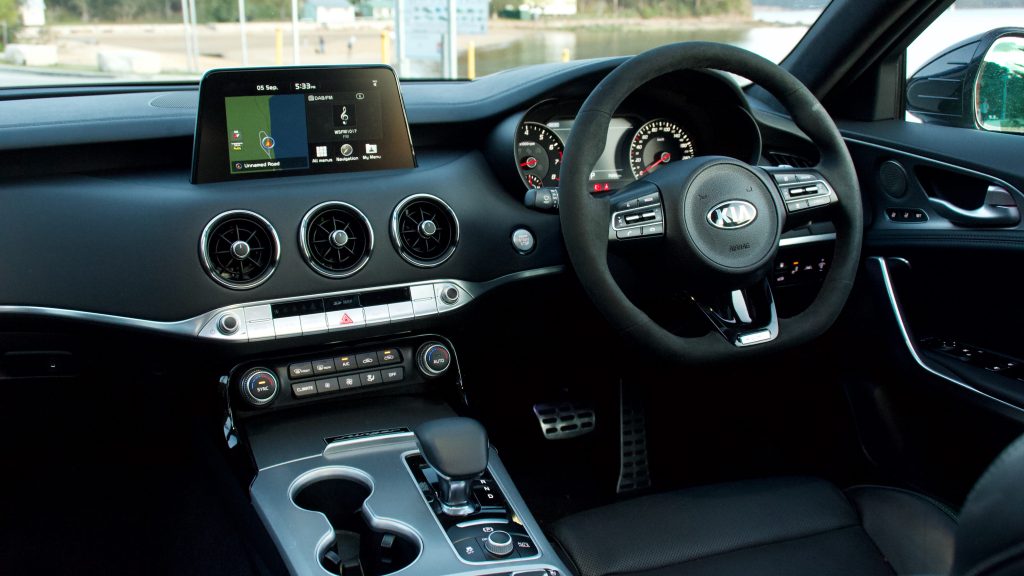
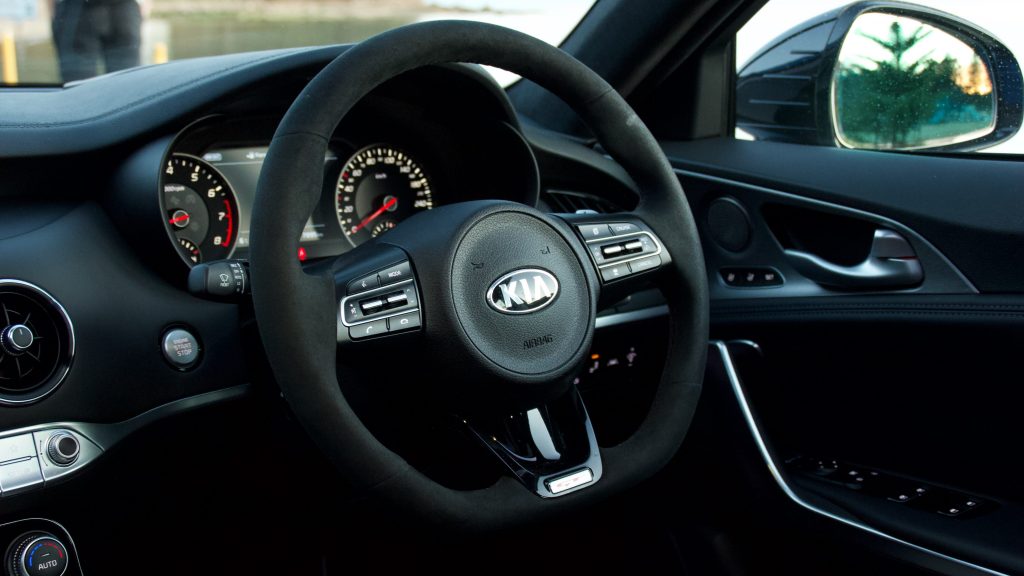

Some other areas could do with improvement. The ambient lighting doesn’t hold a candle to what many premium rivals offer and the climate control knobs look like they were lifted straight out of a Sportage SUV. The infotainment is also complete if not cutting edge. The 8.0-inch touchscreen looks a bit undercooked and it would be lovely to have a full digital driver’s display to complement the lovely colour heads-up display. At least the former will be resolved in an upcoming facelift.
“The 8.0-inch touchscreen looks a bit undercooked and it would be lovely to have a full digital driver’s display to complement the lovely colour heads-up display.”
The downside of the dramatic exterior styling is that visibility out the back isn’t great and taller backseat passengers will find their hair brushing the roof lining. There’s also little toe room if the front seats are set in their lowest positions. At least there is plenty of legroom to slouch, and you also get decent amenities. The rear is treated with soft touch materials on the doors and air vents in the same turbine style as up front, a USB port, a 12V socket and a centre arrest with cupholders.
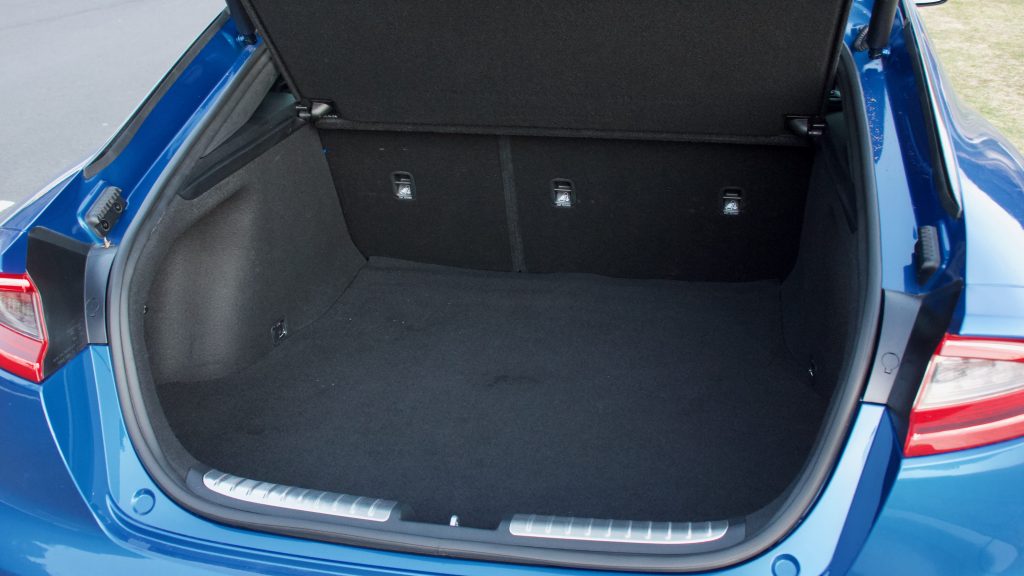
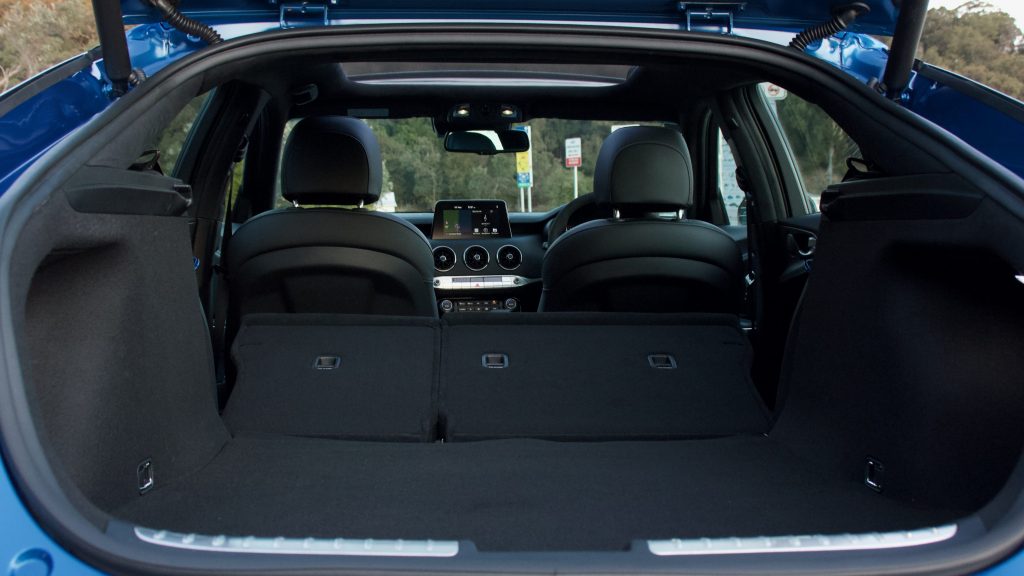
The boot isn’t exactly cavernous for a large car, but it has a hugely practical electric hatch that allows for easy access. It’s also a flat, wide and long space if not the deepest – offering 406L with the seats up. Fold the seats down and you get a respectable 1114L.
“The boot isn’t exactly cavernous for a large car, but it has a hugely practical electric hatch that allows for easy access.”
While you’d think a fully-loaded Stinger would pip a base 3 Series, the BMW 320i’s interior does away with the notion that base-model Bimmers are spartan. The vibrant digital driver’s display and widescreen infotainment system are classy operators, while the real metal highlights and tactile switchgear make for a beautifully presented cabin. It also offers a bigger boot than the Stinger despite smaller exterior dimensions.
Running Costs & Warranty: 8.0/10
Kia’s seven-year and unlimited kilometre warranty appeals to the head – giving you the sense that a sportscar can be a rationale purchase. While the single year of roadside assistance doesn’t sound too impressive, it automatically renews every year with every scheduled service at a Kia dealership for up to eight years.
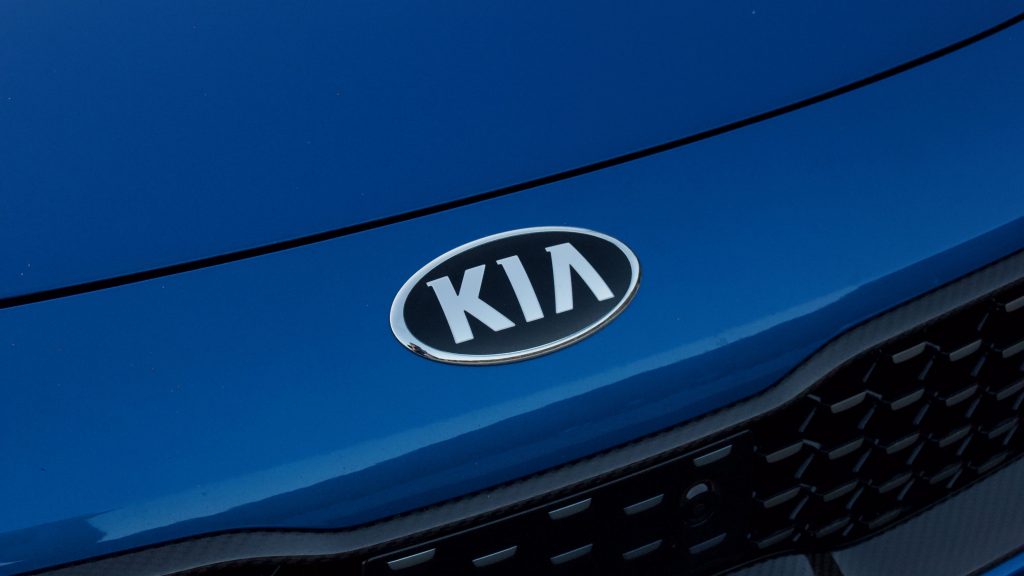
Less ideal are the servicing intervals, with all 2020 Kia Stinger varients requiring attention every 10,000km – meaning frequent visits for high mileage drivers. Stick to 10,000km or less and the first five years will set you back $2,469. Not bad. Drivers who average 15,000km a year will need to fork out an additional $1,599 in the same period, totally at $4,068. Ouch!
BMW offers a $1,650 servicing package for the 3 Series, but that only covers three years or 40,000km, and it simply can’t match Kia’s rock-solid warranty and roadside assistance program.
2020 Kia Stinger GT Carbon Edition DiscoverAuto Rating: 8.6/10
When developing the Stinger, Kia set out to change the way we think of the Korean brand – aiming to have kids put up posters of its halo car up on their walls. There’s no denying it well and truly met the brief. Any car enthusiast that dismisses the 2020 Kia Stinger simply because of the badge on the bonnet clearly isn’t all that much of an enthusiast after all. I’m sure Albert Biermann would agree with me.

The Carbon Edition takes the visual oomph up a degree with racy styling elements but we can’t help but think it should get the Australian-developed active exhaust as standard kit. For that reason, we’d consider saving our coin by getting a normal GT and optioning the exhaust, or simply getting the Night Sky Edition with has the exhaust included as standard. Regardless of which variant you choose, the 2020 Kia Stinger fills a void left by the big Aussie sedans of yore – offering a sophisticated and capable grand tourer in an affordable package that can appeal to your heart and your head at the same time.
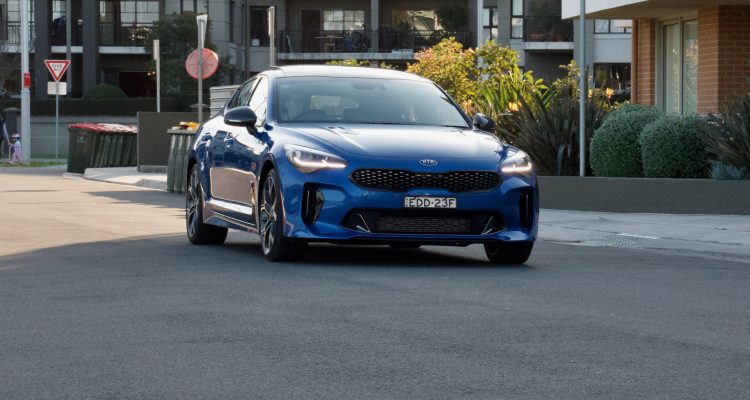
[…] G70’s 3.3-litre twin turbo petrol V6 will sound familiar to our DiscoverAuto readers because we’ve tested this engine before in a different car. The familiar Hyundai-Kia Lambda engine is the exact unit as the Kia Stinger’s V6 and is good for […]